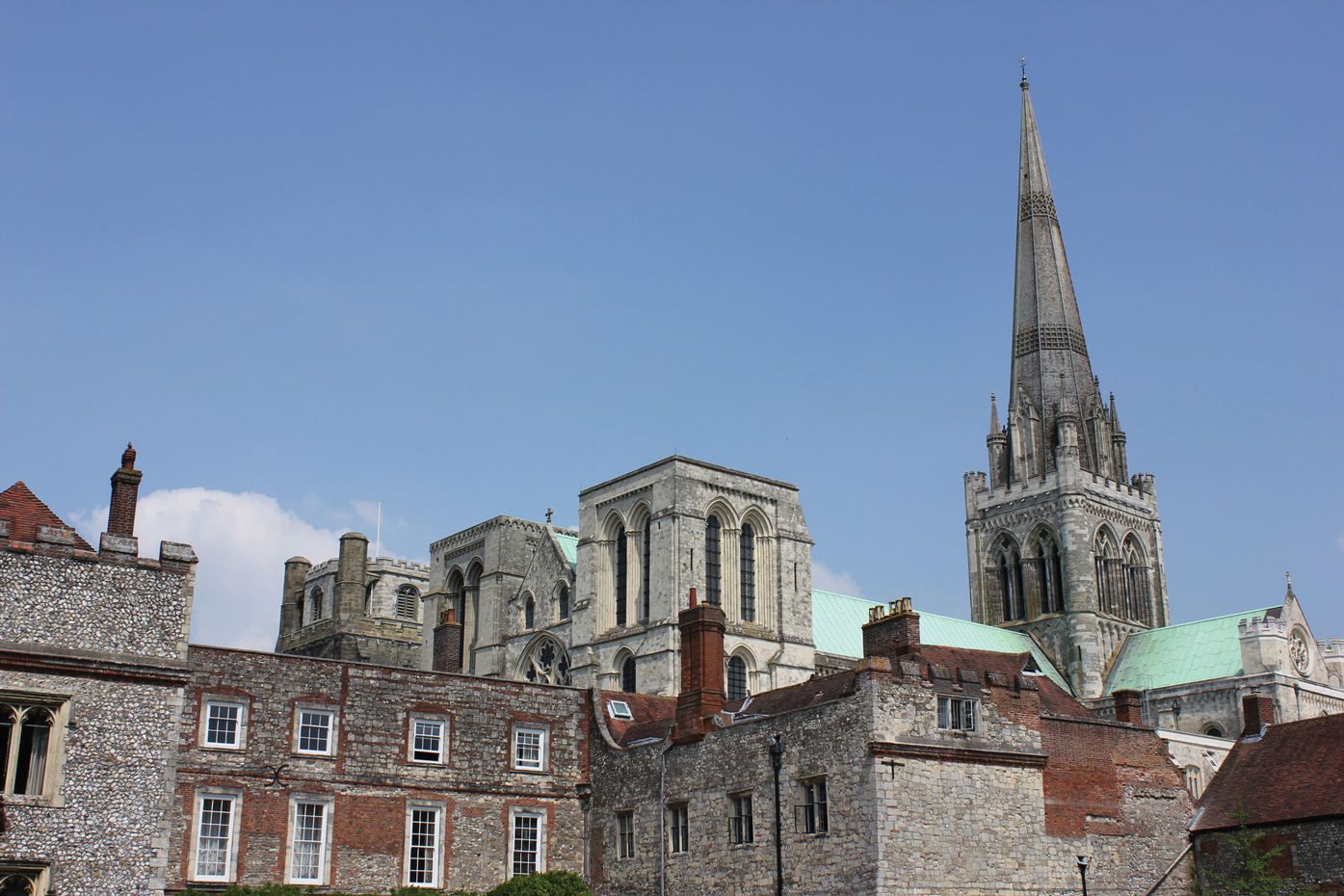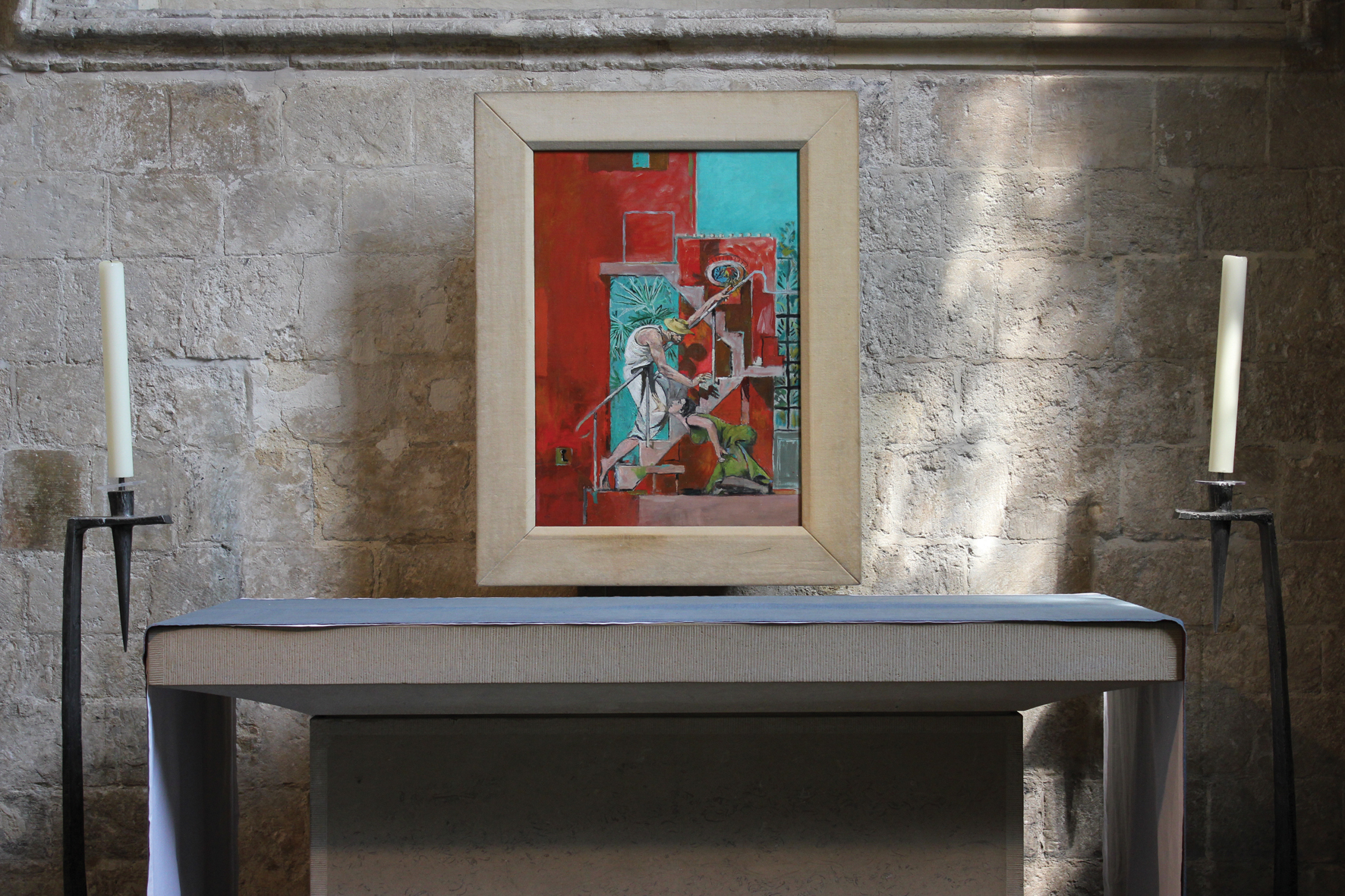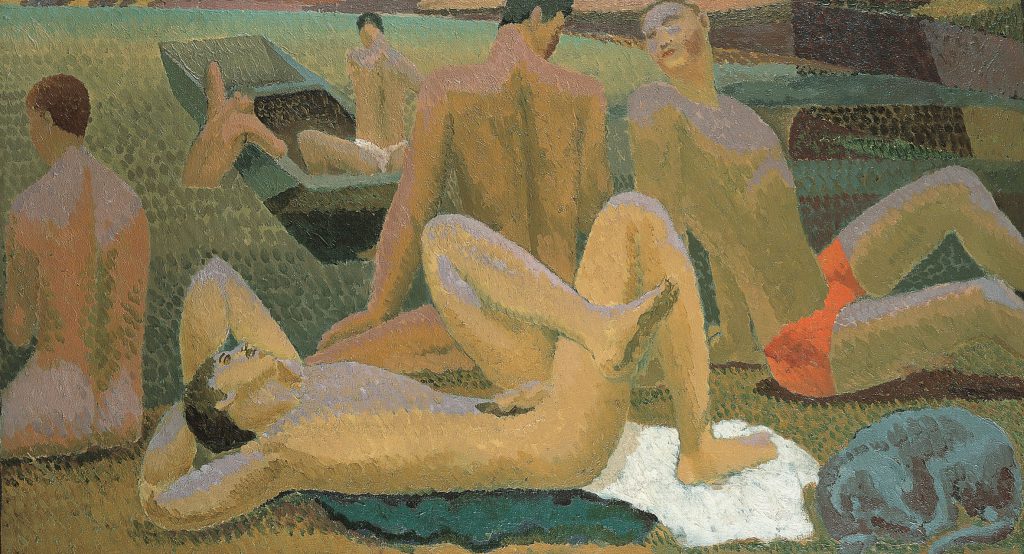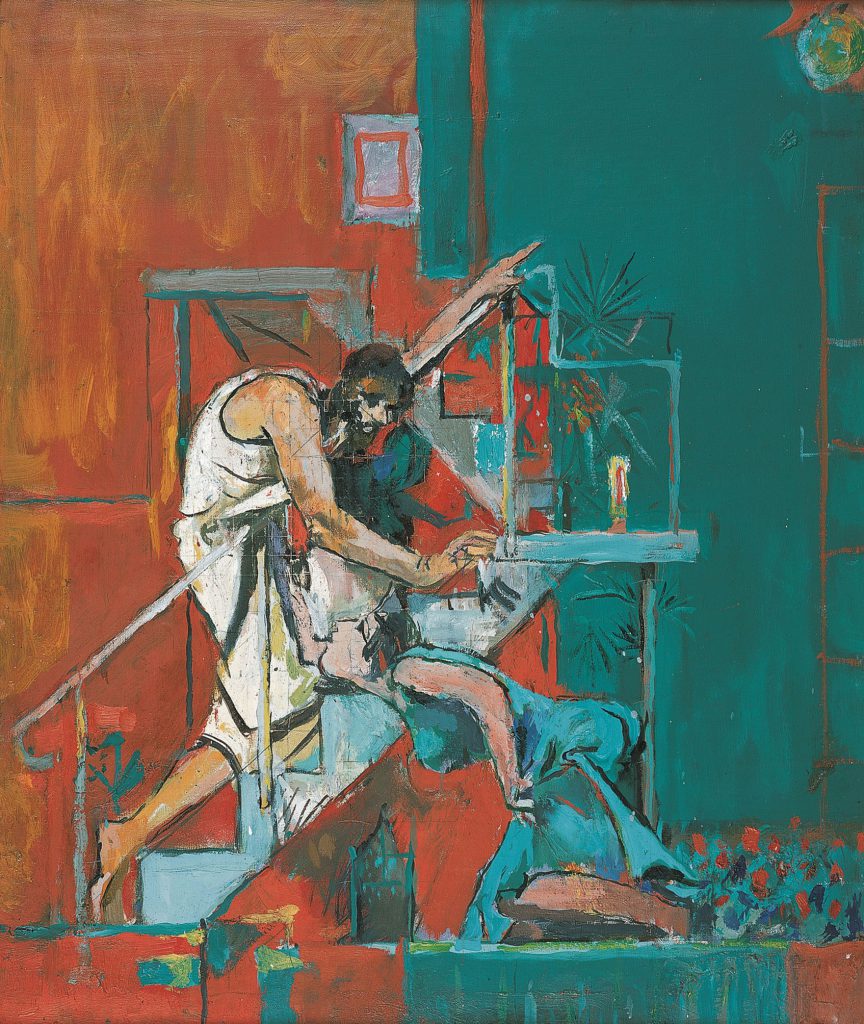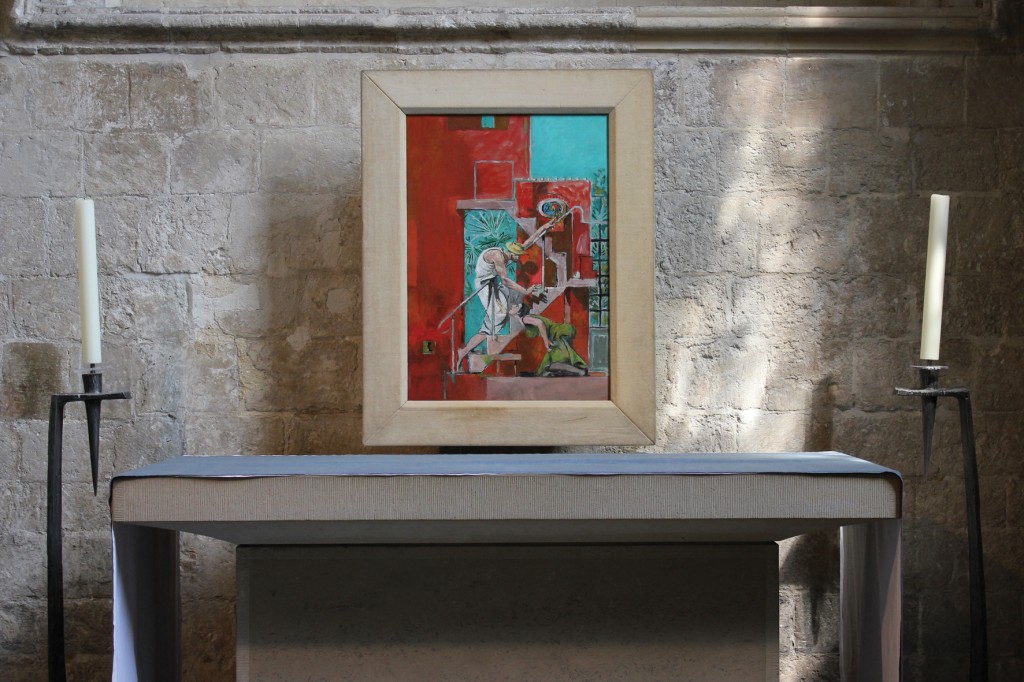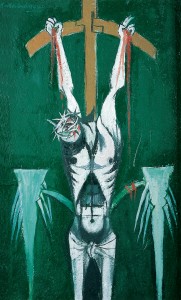
Easter in the Christian tradition marks a pilgrimage from tragedy towards hope. These themes are given powerful voice in Graham Sutherland’s paintings of the Crucifixion and Resurrection of Christ.
Sutherland’s 1947 version of the ‘Crucifixion’ from the Hussey Bequest is displayed at Pallant House Gallery. It illustrates the artist’s obsession with thorns as metaphors for human cruelty; their jagged lines are reflected throughout the composition. Sutherland acknowledged the influence of photographs taken by the American military in the Nazi concentration camps at Belsen, Auschwitz and Buchenwald on his Crucifixions remarking “many of the tortured bodies looked like figures deposed from crosses”. His 1947 Crucifixion depicts Jesus’ body hanging lifeless on the cross. The shocking red of Christ’s blood is accentuated by the fertile green. There is agony in the body’s posture, the weight clearly visible in the angular shoulders, chest and distorted stomach. This is a God who understands and shares in human suffering. Graham Sutherland, a Roman Catholic, was sustained by his Christian faith all his life.

Sutherland gave voice to a common story. His Crucifixions reflected people’s experience of evil in the world and yet spoke loudly of the triumph of hope in response to the tragedy of violence and war. They sadly resonate with our own times.
Graham Sutherland’s vibrant oil on canvas ‘Noli me tangere’ of 1961 was commissioned by Walter Hussey for the St Mary Magdalene Chapel in Chichester Cathedral.
The painting depicts the moment on that first Easter morning when Mary Magdalene becomes aware that she is in the presence of her risen Lord who has just spoken her name. As she reaches out to touch him his gesture stops her. The angular composition of the figures, plants and staircase allude to the Passion narratives which lead up to and include Jesus’ crucifixion. At the centre of the painting is Jesus Christ dressed in white symbolising his holiness and purity. Christ’s finger points towards God the Father symbolising His presence. Graham Sutherland invites us into the narrative at this liminal moment so that we, like Mary, might acknowledge Jesus, our teacher and friend, as advocate and redeemer of the whole world.
Here in the story of Jesus we witness the triumph of hope and love over evil and hatred.
There are a series of services at Chichester Cathedral in the coming days to mark Holy Week and Easter. For more information and times go to www.chichestercathedral.org.uk. To find out more about Pallant House Gallery in Chichester, visit to www.pallant.org.uk.
